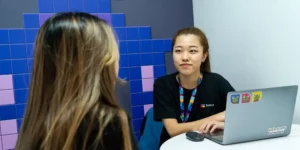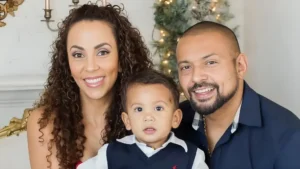To Briefly Summarize NYT Clue & Answer

To Briefly Summarize NYT Clue & Answer
The New York Times Crossword has long been a beloved puzzle for word enthusiasts and casual solvers alike. Each day, millions grab their pencils or fingers and dive into this iconic brain teaser. But what makes these clues so compelling? It’s not just about filling in squares; it’s about the journey through language, culture, and history that each puzzle offers. Whether you’re an experienced solver or just starting out, understanding how to briefly summarize NYT clues and answers can elevate your crossword game to new heights. Let’s explore the intricate world of the NYT Crossword and discover what really lies beneath those cleverly crafted clues.
The Importance of Clues and Answers
Clues and answers are the heart of any crossword puzzle, especially in the New York Times. They create a bridge between words and ideas, challenging our intellect while offering satisfaction upon completion.
Each clue is crafted with precision. It can be cryptic or straightforward, testing not just knowledge but also lateral thinking. The thrill of deciphering a tricky clue adds to the overall experience.
Answers hold significance too. They reveal patterns in language and culture, showcasing trends over time. Whether it’s pop culture references or historical figures, each answer paints a vivid picture of society’s interests.
The interplay between clues and answers keeps solvers engaged. This dynamic relationship fosters creativity as players connect dots that might seem unrelated at first glance. Each completed section ignites joy—a small victory worth celebrating within the daily grind of life.
How NYT Clues and Answers Reflect Society and Culture
The New York Times Crossword is more than just a puzzle; it’s a snapshot of contemporary life. Each clue crafted by the editors mirrors trends, events, and cultural shifts happening in society.
Pop culture references often make their way into clues. From viral memes to blockbuster movies, these hints resonate with solvers who stay attuned to current happenings. Whether it’s music icons or political figures, the crossword reflects what’s relevant at any given moment.
Additionally, themes like diversity and inclusivity have increasingly appeared in puzzles. This evolution shows a growing recognition of different voices and experiences within our communities.
Seasonal events also play a significant role. Holiday-themed clues capture the essence of celebrations throughout the year while connecting solvers with collective memories and traditions.
As society changes, so too do the clues we encounter each day in this beloved puzzle format.
Common Themes in NYT Clues and Answers
The New York Times Crossword is a treasure trove of recurring motifs. You’ll often find themes that resonate with current events, pop culture, or timeless references.
One popular theme revolves around wordplay and puns. Clues can take unexpected turns, prompting solvers to think laterally. This clever twist keeps enthusiasts on their toes.
Another frequent element is the inclusion of famous figures from history or entertainment. Whether it’s artists, athletes, or politicians, these personalities add depth to the puzzle experience.
Seasonal clues also make appearances during holidays like Thanksgiving and Halloween. These thematic entries create a sense of connection to the world outside the grid.
Regional references are common too; they reflect local cultures and cuisines across different parts of the United States. This variety keeps each crossword unique while celebrating diverse backgrounds within its pages.
The Evolution of Clues and Answers in the NYT Crossword
The New York Times Crossword has undergone a fascinating transformation since its inception. Initially, clues were straightforward and often relied on general knowledge. Solvers could expect questions about geography or classic literature.
As the years went by, constructors started incorporating contemporary references. Pop culture became a staple in clue design, reflecting current events and trends that resonated with readers.
Technology has also played a role in this evolution. With online platforms gaining popularity, crossword puzzles adapted to digital formats. This shift allowed for more interactive experiences, including themed weeks and community engagement.
Diversity in topics and voices is now prioritized as well. Constructors from various backgrounds contribute unique perspectives that enrich the puzzle experience for everyone involved.
These changes keep solvers engaged while showcasing the dynamic nature of language and culture within each grid filled with letters and words.
Tips for Solving NYT Crossword Puzzles
Start with the easy clues. These often provide a foundation to build upon. Filling in a few simple answers can spark inspiration for the trickier ones that follow.
Pay attention to wordplay and puns. The New York Times Crossword loves clever twists on language, so be ready for double meanings or unexpected interpretations.
Use the crossings wisely. If you’re stuck, look at intersecting words for hints. They can lead you to breakthroughs when you least expect it.
Don’t hesitate to use outside resources sparingly. A dictionary or thesaurus can help jog your memory without spoiling the fun of solving.
Practice makes perfect! Regularly tackling puzzles improves your skills over time and builds familiarity with common themes and constructions used by NYT constructors.
Conclusion
The New York Times Crossword is more than just a puzzle; it’s a cultural snapshot. Each clue and answer tells a story, reflecting the world we live in. From historical references to modern slang, the crossword connects us to society’s ever-changing landscape.
Understanding how clues and answers evolve can enhance your solving experience. Trends often mirror social issues or pop culture phenomena, making each week feel fresh and relevant. This adds depth to what might seem like simple wordplay at first glance.
For those looking to tackle this iconic challenge, remember that practice makes perfect. Familiarize yourself with common themes and strategies that can make solving easier and more enjoyable.
As you dive into the NYT Crossword each week, take a moment to appreciate not just the words but what they signify about our lives together as a community of solvers. The journey through clues and answers is one worth taking—every letter brings new insights into both language and life itself.







